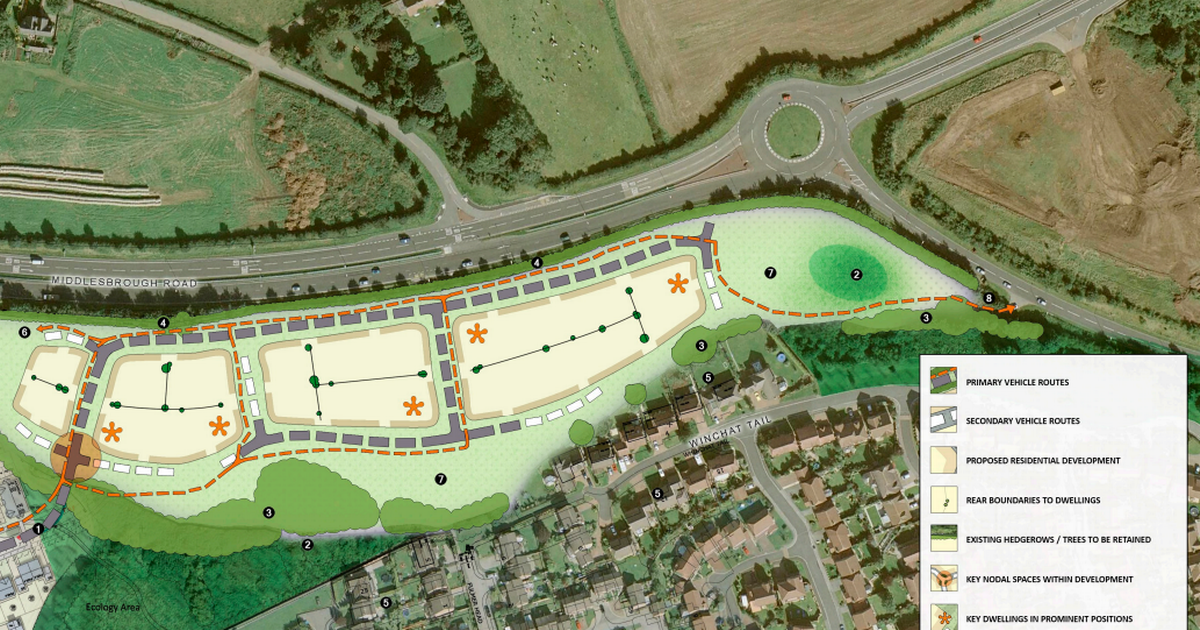Outline approval has been granted by Redcar and Cleveland Council for the second phase of the Taylor Wimpey development in Guisborough which incorporates up to 60 new homes.
The proposal to land at Nightingale Road, Galley Hill, Guisborough, would also include new vehicle and pedestrian access routes, and associated landscapes. The plans were first submitted in 2018 and although outline approval has been given, some details, including appearance, scale and layout still need to be approved by the board.
A council official’s report said 26 representations from members of the public had been received against the plan, with only one in favour.
READ MORE: Residents can toast the new pub once a ‘small-scale’ micro-facility in a former railroad shack is approved
Concerns expressed to date include the potential for increased traffic and noise along Nightingale Road, reduced green space for wildlife, lack of privacy and potential overlook of neighboring properties, and oversubscription of primary and secondary schools in the area. area.
Hutton neighborhood council member Graham Jeffery also objected “on the grounds that the local community does not want this development”.
The report refers to a small strip of land “of some antiquity” along part of the site’s southern boundary that is present on a map from 1773 that marks the boundary between the Chaloner estate and the surrounding property. It is recommended that this be protected on condition that no site work may intersect or disturb it until a written schematic for archaeological ‘brief supervision’ of such work has been proposed and approved by the council.
Contributors to the report also suggest walking and cycling paths to Middlesbrough Road are provided as part of an expansion to encourage more sustainable travel patterns in accessing services and businesses along the Middlesbrough Road corridor, and into the center of Guisborough.
The report said the development was acceptable in terms of the number of houses proposed. With regards to the character and appearance of the area, the report said: “It is accepted that the land is currently agricultural land and thus residential development will change the appearance of the land.
“However, the surrounding land use is predominantly residential and is separated from other agricultural lands by the A171 physical barrier to the north of the site.
“The proposed housing development will coexist with the development currently under construction, resulting in a mix. It is deemed that the provision of housing on this site will not have a significant impact on the appearance of this area sufficient to reject this application.”
Referring to the impact on existing residents living nearby, the report said: “It was considered that given the location of the proposed development, providing landscaping on the edge of the application site and proximity to neighboring properties would not be detrimental. impact on neighboring facilities with respect to privacy or view.”
The new housing is expected to generate a “relatively small quantity of vehicle trips”, but not enough to have a material impact on the operation of the local road network.
It said an ecological assessment submitted to local authorities concluded that no known or endangered wildlife habitat had been identified, although areas of scattered hedges and broadleaf trees offer foraging and shelter opportunities for small mammals, invertebrates, bats and birds, as well as as well as navigational corridors for foraging for bats, pollinators and birds.
It is thought that most of this habitat will be preserved. The report said a ‘head of term’ agreement with the developer should include provisions for a proportion of affordable housing and a financial contribution of £79,372 to provide local special educational needs.
A planning statement previously submitted by urban planning consultancy England Lyle and Good said the new home would be located in a “proven sustainable location”, with excellent access to local services and amenities and would not have any amenity implications. It said there would be no increased risk of flooding at the site, or anywhere else, while the property would be served by suitable and safe access from the first phase of the Galley Hill development.
Guisborough in recent years has seen a number of new housing developments with local residents and some council members oppose them, believing that something of a tipping point has been reached in terms of development in the town.
#homes #proven #sustainable #locations
